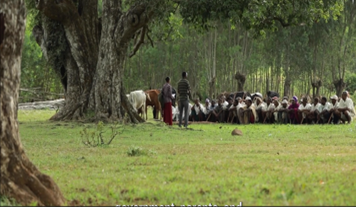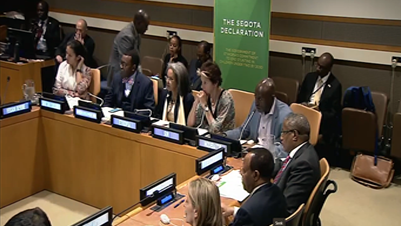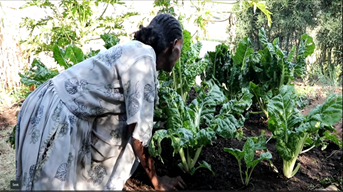News
Canada announces historic investment in the global fight against malnutrition
February 6, 2025
WP_Term Object
(
[term_id] => 49
[name] => Field Stories
[slug] => all-field-stories
[term_group] => 0
[term_taxonomy_id] => 49
[taxonomy] => news-category
[description] => Discover the personal stories of people whose lives have been impacted by better nutrition, and those working tirelessly to deliver it.
[parent] => 0
[count] => 180
[filter] => raw
)
Planning for success: Nutrition International technical assistance supports the Seqota Declaration to end stunting
In Ethiopia, Nutrition International is supporting the Government of Ethiopia to plan, coordinate and implement the Seqota Declaration. Nutrition International’s consultants — embedded in the government over the long-term — are using their expertise to help Ethiopia meet its commitments to end stunting and undernutrition among children under the age of two years by 2030.
Posted on December 11, 2023
When the Government of Ethiopia signed the Seqota Declaration in 2015, it made a commitment.
It wasn’t just the declaration itself and its high-level commitment to end childhood stunting among children under two years of age by 2030. It was the location: Seqota, a town and woreda (district) in northern Ethiopia that had been heavily affected by famine in the early 1980s.
“Part of the reason that the government made that commitment in Seqota was to indicate that this should not happen again,” says Dr. Sisay Sinamo, Nutrition International’s consultant and Senior Program Manager, Seqota Declaration, based in the Federal Program Delivery Unit of the Ethiopian Ministry of Health. “It was called the Seqota Declaration to ensure that people remember.”
Dr. Sisay has been involved with the declaration since 2017, when Nutrition International committed to support it through technical assistance. As a long-term, embedded consultant with the federal government, with technical and financial support from Nutrition International, Dr. Sisay has been providing essential assistance to help implement and scale up the declaration.

The Seqota Declaration’s ambitious mission to end stunting in Ethiopia in children under two years of age by 2030 brings together different sectors, communities and development partners to focus on high-impact nutrition interventions, with special emphasis on gender, the environment and community development. It is taking place over three phases: the Innovation Phase (2016–2020), which emphasized learning by doing, the Expansion Phase (2021–2025), which is expanding interventions from the Innovation Phase to reach more vulnerable communities, and the Scale up Phase (2026–2030), which will cover the entire country.
Implementation of the Declaration, however, has faced a number of challenges. At first, there was uncertainty in Ethiopia about the declaration itself. “The declaration was seen as a project and not a nationwide commitment,” Dr. Sisay explains. “We performed a lot of sensitization and public education to show that this is a government-led and government-owned initiative — and that it is also a government commitment. It’s not a project; it’s a 15-year commitment for ending stunting.”
That also meant creating an implementation plan and mobilizing resources. “When I joined, we had the 15-year road map, but there was no plan for how to translate the roadmap into practice,” Dr. Sisay explains. “In collaboration with partners, we had to develop a costed investment case and implementation plan for the declaration’s Innovation Phase. That plan really laid out clearly what we wanted to do, what we wanted to achieve and what resources were required.” He considers this to be “the biggest achievement of Nutrition International’s technical assistance. We still use that tool for resource mobilization communication.”
With a plan established, the Innovation Phase was able to establish the crucial foundation for the Declaration’s next steps. In particular, a baseline survey of the Innovation Phase (implemented jointly by the Government of Ethiopia, Johns Hopkins University and Nutrition International) provided important insights to guide decision making and make course corrections during the implementation. Nutrition International’s support also helped the government track nutrition resources and actions, increased engagement among leadership and raised additional investment. “There has been a lot of engagement and resource mobilization with the commitment of high-level government leadership and development partners,” recalls Dr. Sisay.

While the Innovation Phase focused on driving innovative interventions in 40 woredas in the Amhara and Tigrai regions, the Expansion Phase builds on the successes and lessons learned from that phase to expand the interventions to a total of 240 woredas in all 11 regions and two city administration areas in Ethiopia.
Bisrat Haile, Nutrition International’s Implementation Advisor in the Ethiopian Ministry of Health’s Nutrition Coordinating Office, has been providing technical assistance to the government for the Expansion Phase. Like Dr. Sisay, Bisrat is an embedded, long-term consultant, and since 2022, has been supporting regions to develop and implement costed woreda-based plans. “These plans are powerful tools,” he says. “They inform leadership from the woreda level all the way up to the federal level.” This includes tracking resources, analyzing budget gaps and mobilizing resources.
Bisrat’s support increases the ability of woredas to implement the plans. “I help build their capacity for improved implementation,” Bisrat says, “and for conducting performance monitoring and feedback. This helps to continuously improve results and support coordination at the different levels.”
Working alongside colleagues from our Africa Regional Office, Bisrat also helps deliver gender training to government staff from different ministries. These national workshops are designed to ensure that gender mainstreaming is integrated into the planning, implementation and evaluation of the Seqota Declaration and the Government of Ethiopia’s Food and Nutrition Policy. They have been well received, and additional training sessions will be held at the regional level.
As the declaration begins to move towards the Scale-up Phase, its third and final phase, costed woreda-based plans remain as crucial as before. Now, however, there are even more regions that need them — 700 woredas by the end of the Expansion Phase, rising to over 1,000 in the Scale-Up Phase in 2026 — making Nutrition International’s support as important as ever. “Some regions have low capacity to submit costed woreda-based plans,” Bisrat explains. “Regions need regular support to complete this cost-based planning in a timely way.”
Resources also remain a crucial challenge. “Adding more woredas means additional resource mobilization and additional regional engagement,” says Dr. Sisay. “It means more donor engagement, more government engagement and more capacity building for woredas to be able to operationalize the declaration.”
“We have to tap additional funding from different sources,” Bisrat adds. “Funding is the critical bottleneck.”

Despite these challenges, both Dr. Sisay and Bisrat remain optimistic and motivated. “The contributions that we are making with the Seqota Declaration really motivate me,” says Dr. Sisay. “I’m looking at change at the community level. At the end of the day, whatever decisions, designs or plans we make end up reaching households. I see it when I do field visits.”
Bisrat agrees. “I work in health because it is natural to me. I’ve worked in Ethiopia for many years, and when I see individuals or families get support and improve their health status, it is a really big reward. I love the work.”
Ethiopia’s commitment to reducing stunting and improving overall nutrition is showing results. In 2020, it was recognized as an Exemplar in Global Health for its successful reduction of stunting from 67% in 1992 to 37% in 2019. The recommendations from that process led Nutrition International to intensify its support to Ethiopia, and we remain committed to continuing to support the Seqota Declaration and Ethiopia’s efforts to eliminate stunting and undernutrition among children under two years of age by 2030.
Nutrition International has delivered technical assistance in 20 countries, supporting national and subnational governments, regional bodies and a global institution. Learn more about our work.